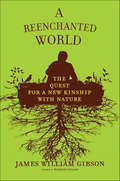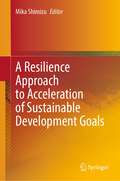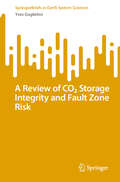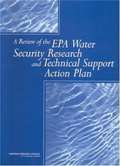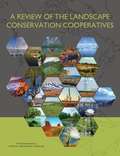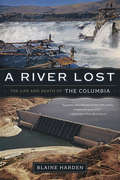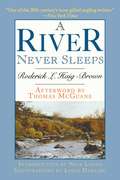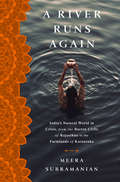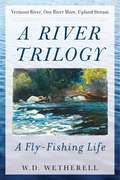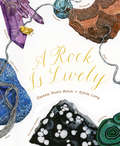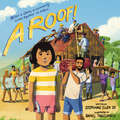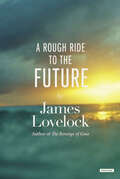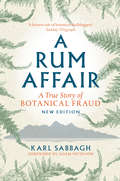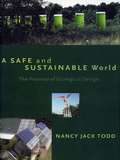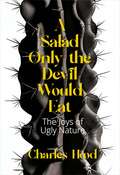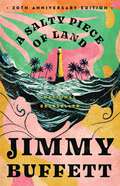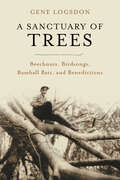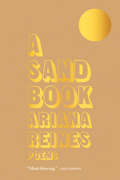- Table View
- List View
A Reenchanted World: The Quest for a New Kinship with Nature
by James William GibsonA surprising and enlightening investigation of how modern society is making nature sacred once againFor more than two centuries, Western cultures, as they became ever more industrialized, increasingly regarded the natural world as little more than a collection of useful raw resources. The folklore of powerful forest spirits and mountain demons was displaced by the practicalities of logging and strip-mining; the traditional rituals of hunting ceremonies gave way to the indiscriminate butchering of animals for meat markets. In the famous lament of Max Weber, our surroundings became "disenchanted," with nature's magic swept away by secularization and rationalization.But now, as acclaimed sociologist James William Gibson reveals in this insightful study, the culture of enchantment is making an astonishing comeback. From Greenpeace eco-warriors to evangelical Christians preaching "creation care" and geneticists who speak of human-animal kinship, Gibson finds a remarkably broad yearning for a spiritual reconnection to nature. As we grapple with increasingly dire environmental disasters, he points to this cultural shift as the last utopian dream—the final hope for protecting the world that all of us must live in.
A Resilience Approach to Acceleration of Sustainable Development Goals
by Mika ShimizuThis is the first book to articulate how to address interlinkages among sustainable development goals (SDGs), which are keys to implementing those goals by 2030. At the heart of the book is a resilience approach to the enabling relevant systems, practices, and education and research. While SDGs are well known at different levels from local to global spheres, a major gap can be seen between goals and approaches, as approaches are lacking for addressing interlinkages among SDGs. The United Nations General Assembly in 2015 acknowledged interlinkages as being of crucial importance in ensuring the purpose of the goals. However, few actual approaches have been specified to address the interlinkages or interconnections at both the policy and practical levels. Thus, it is urgent to face the question of how to address the interlinkages by stakeholders—not only policy communities and researchers but also practitioners and students, especially innovators who can go beyond existing boundaries. By highlighting that challenge, this book lays out a path for addressing interlinkages among SDGs by applying a resilience approach to the issues of a sustainable society. The resilience approach has been developed from combinations of different modes of thinking and practices, including the systems approach, systems and design thinking, and resilience thinking and practices. Based on this overarching approach, innovators seek out the relevance of that approach to their SDGs-related practices at the system, local, and educational levels. The book therefore serves as a guide to how the resilience approach can contribute to accelerating implementation of SDGs by 2030.
A Review of CO₂ Storage Integrity and Fault Zone Risk (SpringerBriefs in Earth System Sciences)
by Yves GuglielmiThis book compares how seismic fault activation can be described by frictional-based theories such as the rate and state theory or by a general dynamic plasticity approach such as the Cam-Clay theory. In this book, the leading edge of fault physics concepts that are best suited and applicable to assess the risk of leakage and induced seismicity associated with large-scale CO₂ storage in sedimentary basins are explored. It compares the hydromechanical response of faults under deviatoric loading at laboratory, field experiment and basin scales. A review of some key parameters that drive the brittle-ductile behavior of faults affecting the reservoir-caprock system is presented. It is suggested that more general plastic criteria than the Coulomb failure should be used to better account for the ratio between the bulk plasticity and localized frictional strength of a fault zone. Based on new field data, it is shown that most of the fault permeability increase occurs at the onset of activation due to bulk dilation, whereas shearing has less impact on the permeability. This is different from laboratory observations where shearing often results in strong permeability reductions. This last part leads to some new concepts that have not been discussed to date, such as the possibility of slow fault movements eventually evolving to earthquakes at timescales of years to decades, thus relevant to the time life of CO₂ storage permits.
A Review of the EPA Water Security Research and Technical Support Action Plan
by Panel on Water System Security ResearchThe report examines a draft plan, prepared by the Environmental Protection Agency, that identifies critical security issues for drinking water and wastewater and outlines related research and technical support needs. This report recommends increased attention to interagency coordination and encourages additional consideration of current restrictions on secure information dissemination. It further suggests that EPA incorporate the results of their research activities into an integrated water security guidance document to improve support for water and wastewater utilities.
A Review of the Landscape Conservation Cooperatives
by Engineering Medicine National Academies of SciencesThe United States' tradition of conserving fish, wildlife, habitats, and cultural resources dates to the mid-19th century. States have long sought to manage fish and wildlife species within their borders, whereas many early federal conservation efforts focused on setting aside specific places as parks, sanctuaries, or reserves. With advances in landscape ecology over the past quarter-century, conservation planners, scientists, and practitioners began to stress the importance of conservation efforts at the scale of landscapes and seascapes. These larger areas were thought to harbor relatively large numbers of species that are likely to maintain population viability and sustain ecological processes and natural disturbance regimes - often considered critical factors in conserving biodiversity. By focusing conservation efforts at the level of whole ecosystems and landscape, practitioners can better attempt to conserve the vast majority of species in a particular ecosystem. Successfully addressing the large-scale, interlinked problems associated with landscape degradation will necessitate a planning process that bridges different scientific disciplines and across sectors, as well as an understanding of complexity, uncertainty, and the local context of conservation work. The landscape approach aims to develop shared conservation priorities across jurisdictions and across many resources to create a single, collaborative conservation effort that can meet stakeholder needs. Conservation of habitats, species, ecosystem services, and cultural resources in the face of multiple stressors requires governance structures that can bridge the geographic and jurisdictional boundaries of the complex socio-ecological systems in which landscape-level conservation occurs. The Landscape Conservation Cooperatives (LCC) Network was established to complement and add value to the many ongoing state, tribal, federal, and nongovernmental efforts to address the challenge of conserving species, habitats, ecosystem services, and cultural resources in the face of large-scale and long-term threats, including climate change. A Review of the Landscape Conservation Cooperatives evaluates the purpose, goals, and scientific merits of the LCC program within the context of similar programs, and whether the program has resulted in measurable improvements in the health of fish, wildlife, and their habitats.
A Review of the Use of Science and Adaptive Management in California's Draft Bay Delta Conservation Plan
by Technology Board Water ScienceThe San Francisco Bay Delta Estuary is a large, complex estuarine ecosystem in California. It has been substantially altered by dikes, levees, channelization, pumps, human development, introduced species, dams on its tributary streams and contaminants. The Delta supplies water from the state's wetter northern regions to the drier southern regions and also serves as habitat for many species, some of which are threatened and endangered. The restoration of water exacerbated tensions over water allocation in recent years, and have led to various attempts to develop comprehensive plans to provide reliable water supplies and to protect the ecosystem. One of these plans is the Bay Delta Conservation Plan (BDCP). The report, A Review of the Use of Science and Adaptive Management in California's Draft Bay Delta Conservation Plan, determines that the plan is incomplete in a number of important areas and takes this opportunity to identify key scientific and structural gaps that, if addressed, could lead to a more successful and comprehensive final BDCP. The plan is missing the type of structure usually associated with current planning methods in which the goals and objectives are specified, alternative measure for achieving the objectives are introduced and analyzed, and a course of action in identified based on analytical optimization of economic, social, and environmental factors. Yet the panel underscores the importance of a credible and a robust BDCP in addressing the various water management problems that beset the Delta. A stronger, more complete, and more scientifically credible BDCP that effectively integrates and utilizes science could indeed pave the way toward the next generation of solutions to California's chronic water problems.
A Risk-Management STRATEGY for PCB-Contaminated Sediments
by Committee on Remediation of PCB-Contaminated SedimentsThe National Academies Press (NAP)--publisher for the National Academies--publishes more than 200 books a year offering the most authoritative views, definitive information, and groundbreaking recommendations on a wide range of topics in science, engineering, and health. Our books are unique in that they are authored by the nation's leading experts in every scientific field.
A River
by Marc MartinThere's a river outside my window. Where will it take me?So begins the imaginary journey of a child inspired by the view outside her bedroom window: a vast river winding through a towering city. A small boat with a single white sail floats down the river and takes her from factories to farmlands, freeways to forests, out to the stormy and teeming depths of the ocean, and finally back to the comforts—and inspirations—of home. This lush, immersive book by award-winning picture book creator Marc Martin will delight readers of all ages by taking them on a transcendent and aspirational journey through an imaginative landscape.
A River
by Marc MartinThere's a river outside my window. Where will it take me?So begins the imaginary journey of a child inspired by the view outside her bedroom window: a vast river winding through a towering city. A small boat with a single white sail floats down the river and takes her from factories to farmlands, freeways to forests, out to the stormy and teeming depths of the ocean, and finally back to the comforts—and inspirations—of home. This lush, immersive book by award-winning picture book creator Marc Martin will delight readers of all ages by taking them on a transcendent and aspirational journey through an imaginative landscape.
A River Lost: The Life and Death of the Columbia (Revised and Updated)
by Blaine Harden"Superbly reported and written with clarity, insight, and great skill." --Washington Post Book World After two decades, Washington Post journalist Blaine Harden returned to his small-town birthplace in the Pacific Northwest to follow the rise and fall of the West's most thoroughly conquered river. To explore the Columbia River and befriend those who collaborated in its destruction, he traveled on a monstrous freight barge sailing west from Idaho to the Grand Coulee Dam, the site of the river's harnessing for the sake of jobs, electricity, and irrigation. A River Lost is a searing personal narrative of rediscovery joined with a narrative of exploitation: of Native Americans, of endangered salmon, of nuclear waste, and of a once-wild river. Updated throughout, this edition features a new foreword and afterword.
A River Never Sleeps
by Thomas Mcguane Nick Lyons Louis Darling Roderick L. Haig-BrownFew books have captured the haunting world of music and rivers and of the sport they provide as well as A River Never Sleeps. Roderick L. Haig-Brown writes of fishing not just as a sport, but also as an art. He knows moving water and the life within it-its subtlest mysteries and perpetual delights. He is a man who knows fish lore as few people ever will, and the legends and history of a great sport.Month by month, he takes you from river to river, down at last to the saltwater and the sea: in January, searching for the steelhead in the dark, cold water; in May, fishing for bright, sea-run cutthroats; and on to the chilly days of October and the majestic run of spawning salmon. All the great joy of angling is here: the thrill of fishing during a thunderstorm, the sight of a river in freshet or a river calm and hushed, the suspense of a skillful campaign to capture some half-glimpsed trout or salmon of extraordinary size, and the excitement of playing and landing a momentous fish.A River Never Sleeps is one of the enduring classics of angling. It will provide a rich reading experience for all who love fishing or rivers.
A River Ran Wild: An Environmental History
by Lynne CherryAn environmental history of the Nashua River, from its discovery by Indians through the polluting years of the Industrial Revolution to the ambitious cleanup that revitalized it.
A River Runs Again: India's Natural World in Crisis, from the Barren Cliffs of Rajasthan to the Farmlands of Karnataka
by Meera SubramanianCrowded, hot, subject to violent swings in climate, with a government unable or unwilling to face the most vital challenges, the rich and poor increasingly living in worlds a∂ for most of the world, this picture is of a possible future. For India, it is the very real present. In this lyrical exploration of life, loss, and survival, Meera Subramanian travels in search of the ordinary people and microenterprises determined to revive India’s ravaged natural world: an engineer-turned-farmer brings organic food to Indian plates; villagers resuscitate a river run dry; cook stove designers persist on the quest for a smokeless fire; biologists bring vultures back from the brink of extinction; and in Bihar, one of India’s most impoverished states, a bold young woman teaches adolescents the fundamentals of sexual health. While investigating these five environmental challenges, Subramanian discovers the stories that renew hope for a nation with the potential to lead India and the planet into a sustainable and prosperous future.
A River Trilogy: A Fly-Fishing Life
by W. D. WetherellFor the first time together, River Trilogy combines three classic works on fly fishing by W. D. Wetherell. Contained here are some of Wetherell’s most poetic pieces, a combination of spontaneous journal entries, reflections on contemplative excursions, and outright fishing tales. Each passage is filled with moving imagery describing the beauty of the river and the natural world that surrounds it. The first book in the collection, Vermont River, is an elegy to the author’s love of fly fishing in his native Vermont. Selected by Trout magazine as one of the thirty finest works on fly fishing, Vermont River will move readers with its radiant descriptions of Wetherell’s beloved sport and region. In Upland Streams, Wetherell explores the meandering streams and crooked creeks that dot New England’s landscape, the mighty rivers that flow through the Southwest, and the crags and lochs that fill the countryside of Scotland. Conveyed with characteristic humor and introspection, Upland Streams chronicles moments of life lived close to nature in all its majesty. One River More, the final volume in the collection, begins as a traditional chronicle of trout fishing in Vermont and Montana. It quickly, however, becomes a rich exploration of some of the most essential human experiences: love of nature and love of family.
A Rock Is Born: An Epic Journey Through Time
by Richard HoFollow the epic life cycle of one rock from its prehistoric creation to modern day, in this transportive nonfiction picture book perfect for fans of GRAND CANYON and the Over and Under series.Over one hundred million years ago, on the side of a volcano....a rock is born.As time passes and the world changes, the rock changes, too. Mud erodes it. Lava melts it. And water compresses it.Eventually, the rock will be reshaped. And a new rock is born.Award-winning creators Richard Ho and Lily Williams bring to life an evocative and educational picture book about the life cycle of a rock in this bold nonfiction tale perfect for any classroom or bookshelf.
A Rock Is Lively
by Dianna Hutts Aston Sylvia Long<p>From the award-winning creators of An Egg Is Quiet, A Seed Is Sleepy, and A Butterfly Is Patient comes a gorgeous and informative introduction to the fascinating world of rocks. From dazzling blue lapis lazuli to volcanic snowflake obsidian, an incredible variety of rocks are showcased in all their splendor. Poetic in voice and elegant in design, this book introduces an array of facts, making it equally perfect for classroom sharing and family reading. <p>This is a fixed-format ebook, which preserves the design and layout of the original print book.</p>
A Roof!
by Stephanie Ellen SyA dazzling picture book debut about a young girl in the Philippines who returns a neighbor&’s roof after a typhoon with the help of her community.Typhoons are a regular part of Maya&’s life in the Philippines, but after this storm, she finds something unusual in her backyard—a roof! There&’s an address written on it, and Maya is determined to return it to its family. She&’ll need help to make her way through the damage left behind by the typhoon. As she sets out with her tatay, Maya collaborates with a farmer and his carabao, a couple of fishers and their boat, a sapatero, a labandera, a kusinera, and more of her neighbors. Together, they sail around knotted tree roots, hauling, heaving, pushing, and dragging the roof until they find its family—and begin to rebuild their community.Told by Stephanie Ellen Sy in a cumulative structure that begs to be read aloud, and paired with Daniel Tingcungco&’s lush and cinematic illustrations, A Roof! is a story about community care that celebrates the Filipino spirit of bayanihan.
A Rough Ride to the Future
by James LovelockThe great scientific visionary of our age presents a radical vision of humanity’s future as the thinking brain of our Earth-system.A Rough Ride to the Future introduces two new Lovelockian ideas. The first is that three hundred years ago, when Thomas Newcomen invented the steam engine, he was unknowingly beginning what James Lovelock calls “accelerated evolution.” That is a process that is bringing about change on our planet roughly a million times faster than Darwinian evolution. The second idea is that as part of this process, humanity has the capacity to become the intelligent part of Gaia, the self-regulating earth system whose discovery Lovelock first announced nearly fifty years ago. A Rough Ride to theFuture is also an intellectual autobiography, in which Lovelock reflects on his life as a lone scientist and asks—eloquently—whether his career trajectory is possible in an age of increased bureaucratization. We are now changing the atmosphere again, and Lovelock argues that there is little that can be done about this. But instead of feeling guilty, we should recognize what is happening, prepare for change, and ensure that we survive as a species so we can contribute to—perhaps even guide—the next evolution of Gaia. The road will be rough, but if we are smart enough, life will continue on earth in some form far into the future.Praise for A Rought Ride to the Future“Arresting and disturbing . . . Lovelock writes wonderfully well. With the authority of age, his voice is that of an elder statesman . . . The result is mellifluous and fluent.” —Nature “Though the subject matter could scarcely be more discouraging, Lovelock’s fluent prose and vast range of knowledge make it a surprisingly easy read. . . . His writing has enormous warmth and vitality.” —Financial Times “The most important book for me this year . . . Lovelock is the most prescient of scientists. . . . He has given us a handbook for human survival.” —John Gray, The Guardian“Not simply another look at Mother Nature’s uncertain future, but a revealing glimpse at the life of an outspoken and accomplished man of ideas.” —Publishers Weekly
A Rum Affair: A True Story of Botanical Fraud
by Karl SabbaghA true story of a Scottish isle, an eminent professor, a lie, and an amateur botanist who saw the truth, by the author of Antisemitism Wars. In the 1940s, the eminent British botanist John Heslop Harrison proposed a controversial theory: that vegetation on the islands off the west coast of Scotland had survived the last Ice Age. His premise flew in the face of what most botanists believed—that no plants had survived the 10,000-year period of extreme cold. But Heslop Harrison had proof: the plants and grasses found on the isle of Rum. Harrison didn&’t anticipate, however, an amateur botanist called John Raven, who boldly questioned whether these grasses were truly indigenous to the area, or whether they had been transported there. This is the story of what happened when a tenacious amateur set out to find out the truth, and how he uncovered a most extraordinary fraud.Praise for A Rum Affair&“A breezy ride . . . informative and amusing.&” —Washington Post Book World&“An exciting scientific detective story.&” —Times Literary Supplement
A Safe Haven
by Rowena SummersA pirate offers a twenty-one-year-old widow a chance for romance, adventure, and freedom in this touching saga of love and passion.Sussex, 1763: As young widow Sarah Huxley celebrates her twenty-first birthday at the family seat of her uncle, Lord Endor, the festivities are interrupted by an uninvited guest: the notorious pirate Black Robbie, along with his crew. By the time Robbie has collected his spoils from the partygoers, it is clear to Sarah that he is no common cutthroat, and she is irresistibly drawn towards him, just as he is towards her. So when Sarah discovers that her uncle has arranged a second marriage for her, she finds in Robbie an unlikely savior, as he helps her escape. But as ghosts from their past threaten to encircle them both, they must endure their troubles to earn the safe haven they so desperately seek. A must read for fans of Katie Flynn, Rosie Goodwin, and Lyn Andrews.
A Safe and Sustainable World: The Promise Of Ecological Design
by Nancy Jack ToddIn the late sixties, as the world awoke to a need for Earth Day, a pioneering group founded a small non-profit research and education organization they called the New Alchemy Institute. Their aim was to explore the ways a safer and more sustainable world could be created. In the ensuing years, along with scientists, agriculturists, and a host of enthusiastic amateurs and friends, they set out to discover new ways that basic human needs--in the form of food, shelter, and energy--could be met. A Safe and Sustainable World is the story of that journey, as it was and as it continues to be.The dynamics and the resilience of the living world were the Institute's model and inspiration for their research. Central to their efforts then and now is, along with science, a spiritual quest for a more harmonious human role in our planet's future. The results of this work have now entered mainstream science through the emerging discipline of ecological design.Nancy Jack Todd relates a fascinating journey from lofty ideals through the hard realities encountered in learning how to actually grow food, harness the energy of the sun and wind, and design green architecture. She also introduces us to some of the heroes and mentors who played a vital role in those efforts, from Buckminster Fuller to Margaret Mead.Successfully proving through the Institute's designs and investigations that basic land sustainability is achievable, John Todd and the author founded a second non-profit research group, Ocean Arks International. A Safe and Sustainable World demonstrates what has, can, and must be done to integrate human ingenuity and four billion years of evolutionary intelligence into healthy, decentralized, local dreams.
A Salad Only the Devil Would Eat: The Joys of Ugly Nature
by Charles HoodIn these wry and explosively funny essays, nature obsessive Charles Hood reveals his abiding affection for the overlooked and undervalued parts of the natural world. Like a Bill Bryson of the Mojave exurbs, Hood takes us on a joyride through the obscure, finding wilderness in Hollywood palms, the airports of Alaska, and the empty lots of Palmdale. In a zinger-filled whirl of literary and artistic allusions, he celebrates Audubon’s droopy condor, the world-changing history of a cactus parasite, and the weird art of natural history dioramas. This debut collection of creative nonfiction from a widely published poet, photographer, and wildlife guide unveils the wonderment of nature’s underbelly with poetic vision and singular wit.
A Salty Piece of Land
by Jimmy BuffettWander to "where the song of the ocean / Meets the salty piece of land" with Tully Mars, washed up from Margaritaville and in the mood for monkeyshines, in a shimmering Caribbean epic by the late king of tropical rock, Jimmy Buffett. It's not on any chart, but the tropical island of Cayo Loco is the perfect place to run away from all your problems. Waking from a ganja buzz on the beach in Tulum, Tully can't believe his eyes when a 142-foot schooner emerges out of the ocean mist. At its helm is Cleopatra Highbourne, the eccentric 101-year-old sea captain who will take him to a lighthouse on a salty piece of land that will change his life forever. From a lovely sunset sail in Punta Margarita to a wild spring-break foam party in San Pedro, Tully encounters an assortment of treasure hunters, rock stars, sailors, seaplane pilots, pirates, and even a ghost or two.
A Sanctuary of Trees: Beechnuts, Birdsongs, Baseball Bats, and Benedictions
by Gene LogsdonAs author Gene Logsdon puts it, "We are all tree huggers." But not just for sentimental or even environmental reasons. Humans have always depended on trees for our food, shelter, livelihood, and safety. In many ways, despite the Grimm's fairy-tale version of the dark, menacing forest, most people still hold a deep cultural love of woodland settings, and feel right at home in the woods.In this latest book, A Sanctuary of Trees, Logsdon offers a loving tribute to the woods, tracing the roots of his own home groves in Ohio back to the Native Americans and revealing his own history and experiences living in many locations, each of which was different, yet inextricably linked with trees and the natural world. Whether as an adolescent studying at a seminary or as a journalist living just outside Philadelphia's city limits, Gene has always lived and worked close to the woods, and his curiosity and keen sense of observation have taught him valuable lessons about a wide variety of trees: their distinct characteristics and the multiple benefits and uses they have.In addition to imparting many fascinating practical details of woods wisdom, A Sanctuary of Trees is infused with a philosophy and descriptive lyricism that is born from the author's passionate and lifelong relationship with nature: "There is a point at which the tree shudders before it begins its descent. Then slowly it tips, picks up speed, often with a kind of wailing death cry from rending wood fibers, and hits the ground with a whump that literally shakes the earth underfoot. The air, in the aftermath, seems to shimmy and shiver, as if saturated with static electricity. Then follows an eerie silence, the absolute end to a very long life."Fitting squarely into the long and proud tradition of American nature writing, A Sanctuary of Trees also reflects Gene Logsdon's unique personality and perspective, which have marked him over the course of his two dozen previous books as the authentic voice of rural life and traditions.
A Sand Book
by Ariana Reines"Mind-blowing." —Kim Gordon A Sand Book is a poetry collection in nine parts, a travel guide that migrates from wildfires to hurricanes, tweety bird to the president, lust to aridity, desertification to prophecy, and mother to daughter. It explores the negative space of what is happening to language and to consciousness in our strange and desperate times. From Hurricane Sandy to the murder of Sandra Bland to the massacre at Sandy Hook, from the sand in the gizzards of birds to the desertified mountains of Haiti, from Attar's Conference of the Birds to Chaucer's Parliament of Fowls to Twitter, a sand book is about change and quantification, the relationship between catastrophe and cultural transmission. It moves among houses of worship and grocery stores, flitters between geological upheaval and the weird weather of the Internet. In her long-awaited follow-up to Mercury, Reines has written her most ambitious work to date, but also her most visceral and satisfying.
